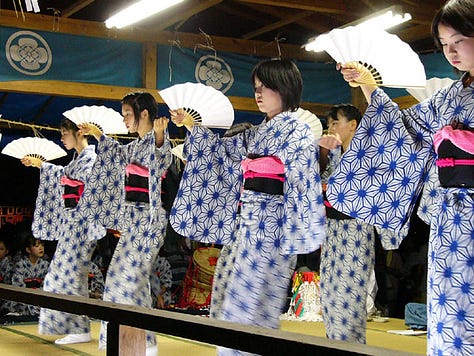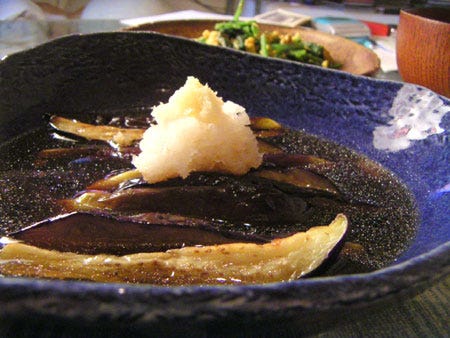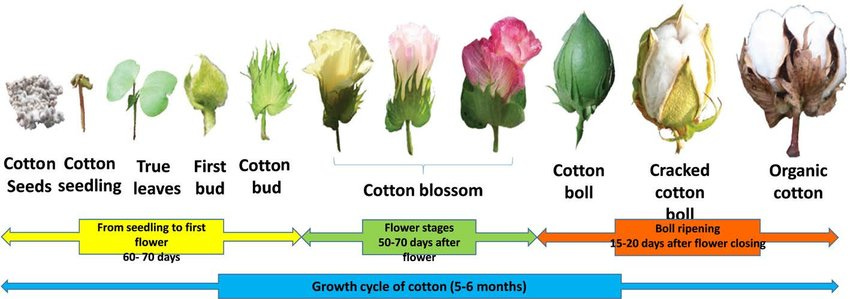August 23 - 27
綿柎開
わたの はなしべ ひらく
Wata no hanashibe hiraku
”Cotton flowers fluff up”
Some materials we’ve adapted from nature have become so commonplace, so part of our everyday lives, that it’s easy to forget that their true home is in the wild. We’re so used to reading “cotton” on clothing tags and brand names that we stop thinking as much about where it comes from. Where it all starts, this indispensable globally traded textile, is as the protective casing around the seeds of its plant’s flower. A sort of natural packaging material for precious cargo.
Although I suppose looking at the above picture makes it pretty obvious what it is, what with the distinctly cotton-ball shape. And indeed they’re taken off the plant just like that, separated from the seeds, and spun into threads. We produce about 25 million tons of it annually worldwide—enough to make 10 shirts for every person on Earth. It can become denim, it’s used in bedsheets and tablecloths, it turns into terrycloth for bath towels and is mixed into the majority of clothes that we wear. We’ve been using it in these ways for nearly 7,000 years. It’s provided for us as much as any staple grain.
So the yearly appearance of these fluffy little balls is a welcome sight, to say the least. They’re the result of what’s called a boll1 (cotton’s “fruit”) forming from a supporting part of the pollinated flower called the calyx (in Japanese gaku/萼) which are made up of individual sepals (hanashibe/柎), the latter of which this microseason names. Inside that group of sepals gathers up a boll, which eventually grows big enough to burst out of its botanical shell. Once the sepals have opened (the hiraku/開 part here) the bolls begin to properly emerge and, as I’ve chosen to translate: fluff up. It’ll take another month or so until it’s fully fluffed and ready for harvest.
There is a more, well, flowery part of the cotton flower, but its petals are usually only visible for just a few days. In domesticated cotton, a small white flower opens for a few hours and self-pollinates, becomes a vibrantly fuchsia for another day or so until the petals fall away and leave behind the green egg-shaped boll.
I find it interesting that the kō featuring cotton focuses not on the opening of its flowers, as with others, but the splitting of the boll. Of course, we mustn’t forget that the Koyomi was primarily a farmer’s almanac, and its natural signs focused on tracking the progress of a planting and harvesting year.
We’ve worked our way somewhat backwards with our Japanese vocab here after a brief botany detour, but with 2/3 of the characters explained you can probably infer then that the wata (綿) part of this kō means “cotton plant.” The material itself is usually called momen (木綿), which adds the character for “tree” owing to the fact that tree cotton is the more common varietal in Japan and Asia. Cotton has been in Japan for centuries, the first seeds reportedly brought over from India in the 8th century. Still, cotton remained an expensive, imported luxury item until the Edo period (16th century) when farmers began to take on Chinese techniques to get the plants to produce.2
Before the widespread cultivation of cotton, most Japanese clothing and textiles were made from hemp (asa/麻), a heartier plant that grew easily all over the country. The important place in society now occupied by cotton was, for thousands of years, given to hemp3. Its influence remains in the world of Japanese textiles as a popular traditional pattern for kimono and other fabrics (which, somewhat ironically, are usually made of cotton).



Cotton cultivation and dying flourished in the warmer areas of the Japanese archipelago to the south and west. Some of the earliest farms to establish were on the major islands Kyūshū and Shikoku4. There are a few places in Japan that have continued notoriety for their cotton textiles: Kurume in Fukuoka, Matsusaka in Mie, Imabari in Ehime, and Aizu in Fukushima (a rare northern outlier with 400 years of production history).
The prefecture of Tokushima, on the island of Shikoku, was largely responsible for popularizing the indigo dying process called aizome (藍染) which would become closely associated with Japanese cotton clothing, as well as the sailors and fishermen that traded there. The craft is still practiced there, and their unique mastery of the technique can be enjoyed during the area’s famous Awa-Odori dances throughout late summer.
And perhaps the most unlikely famous Japanese cotton can be found in the town of Kurashiki in Okayama (Kyūshū), which is famous for its blue jeans and other denim5 products.


One last fun Japanese cotton-related note to finish up: the sweet fair and festival treat made from spun sugar that we call cotton candy6 was introduced to Japan shortly after its invention and was instantly popular. So then naturally in Japanese it’s called wata-ame (綿飴), which is of course the words for cotton and candy.
Before and sugary desserts though, we’ll need to enjoy a more balanced (and seasonal) plate:
● Seasonal fruit
sudachi, スダチ, sudachi citrus● Seasonal seafood
kasago, カサゴ, scorpionfish● Seasonal vegetable
nasu, ナス, eggplant/aubergine



Everything that we have built and made for ourselves as human beings has come from the world around us. No matter how transformed, how separated from its wild roots, we owe every comfort of our lives to a combination of our own ingenuity and the incredible, varied abundance of our environment. It takes 300 cotton bolls to make a pound of material, and part of caring for these plants and the land they need to grow in is realizing what we take from them, and thinking about what we can give back.
See you next kō~
This one took longer to get out as I wound up reading a lot of articles about cotton plants…
[Images & info by kurashikata.com, kurashi-no-hotorisya.jp, 543life.com, and Wikipedia except where otherwise noted]
Although similar-sounding and similar-meaning words, “ball” and “boll” are not etymologically related—boll comes from the same root from which we get “bowl”
In Japanese, they’re called saya (莢)
Thanks to Kimonoboy’s Japanese Folk Textiles for their great writeup!
Modern Japan has a…complicated relationship with the plant, given its other use in creating the recreational drug marijuana—however, despite some of the world’s strictest laws about marijuana possession (residents can be prosecuted for using it in other countries during travel), there remains a loophole about getting high off it in order to protect farmers who produce it for traditional textiles and could theoretically inhale fumes containing THC from burning fields or discarded weeds
A quick Japanese geography lesson if needed—the country is an archipelago primarily comprised of 4 major islands: Honshū (本州, where Tōkyō, Kyōto, and Ōsaka are located), Kyūshū (九州) to the south, Shikoku (四国) to the west, and Hokkaidō (北海道) to the north, and then about 14,000 other smaller islands including those which make up the Ryūkyū (Okinawa) island chain and Izu Ōshima where Godzilla is from
If you didn't know that denim was made from cotton, now you do! Jeans themselves descended from Indian “dungarees,” a thick cotton trouser for workmen, often dyed dark blue to deflect heat and deter mosquitos
Or “fairy floss” if you’re in a Commonwealth country and speaking British English








This was an interesting article about something I use every day, but knew very little about. I had no idea how pretty cotton flowers are!